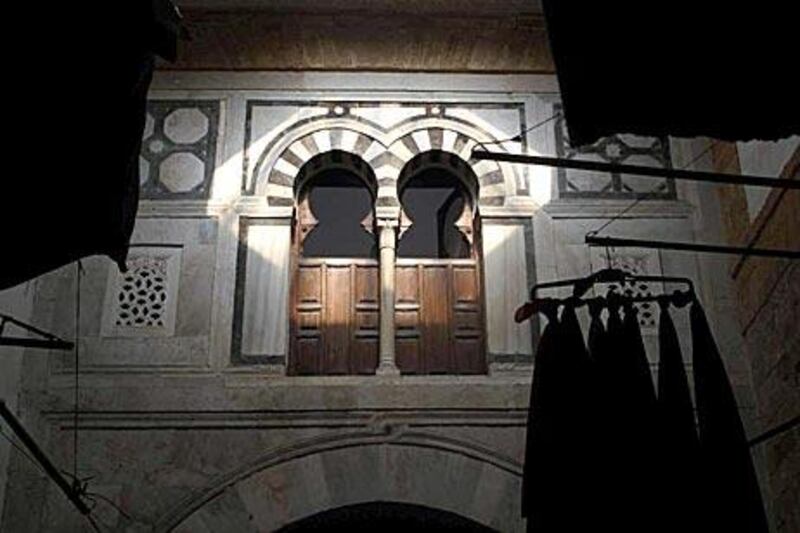'Did you know Sicily is actually on the African tectonic plate?" I swear that's what my friend in Palermo told me. It seemed a handy, reassuring thing to know, for it meant my long Africa trip had already begun.
With ticket in hand for the 10-hour Grimaldi Lines ferry from the Sicilian capital to Tunis, I was using Palermo as a springboard for an assault on Africa. Travelling overland wherever possible, I'll explore the continent high and low, not wedded to a fixed itinerary, living on a tight budget for four to six months.
On Africa's outer rim, Palermo is edgy, vivacious and seemingly crumbling. I confess to being smitten. Late one night, on a stoop outside a gloriously seedy watering hole in the old market district, I find myself sharing a drink with a Sicilian woman who rails against the local corruption and the garbage piled up around us - all signs that this place isn't entirely European.
"One thing that really concerns me is the big crack on the floor of my apartment," she tells me later. "If there's an earthquake, that's it."
The less shaky terrain of the African mainland beckons. I board the Tunis-bound boat at midday along with several hundred mainly Tunisian passengers, a Honduran bartender named George who complains about the Tunisians complaining too much, and a group of older, bridge-playing English and American travellers who seem to be tootling around North Africa in old-fashioned roadster-type touring cars. I wish I'd got a better look at these as they passed me on the street that night in La Goulette, the main port of Tunis.
Compared with Palermo, old Tunis is a ghost town the next day. "Where is everybody?" I ask the woman at reception at Dar el Medina, the poshest hotel in the medina. The maze of narrow streets in the medieval quarter is deserted - depressing, even.
"The medina is always quiet," she says. "That's why people like it here." Maybe so, but I'm already missing the non-stop sirens of Sicily.
Lacking the budget for Dar el Medina, I check into Tunis's only youth hostel, the unimaginatively named Auberge de Jeunesse. It's a run-down palace deep in the medina, with a columned courtyard of cracked marble and dusty chandeliers. Otherwise breathtaking, the facilities here give new depth to the euphemism "basic". Water flows from the tap, albeit slowly, and the toilets do flush, so I'm happy.
Just over 24 hours later, I wondered what on earth that woman at the hotel could have possibly meant. My first experience of the oldest part of Tunis had been on a Sunday, but it turns out much of Tunisia, including nearly every shop in the medina, is closed on Sunday. On Monday, the quarter springs to life. The hostel had rented out the courtyard for the opening feast of a local wedding, and well past midnight, the throaty male voices of an a capella singing troupe echo from the tiled walls, amplified to full volume. Sleep is not even to be thought of, let alone tried. You call this quiet?
That was last night. By now, I'm almost feeling at home. The old walled quarter of Tunis has little of the madness and hassle of its larger Moroccan cousin, the famous labyrinthine medina of Fes, which is riddled with donkeys, smelly butcher shops and pestering touts.
Plus, there's a bit of harmony here that I didn't notice initially: a quiet harmony, wedding singers notwithstanding, of whitewashed walls, tiled interiors, painted shutters and studded wooden doors. On lanes too narrow for cars, the cobbles slope inward to a central gutter to collect rainwater and whatever else is poured into it; stately granite columns with floral capitals support archways with voussoirs of alternating colours, typical of Moorish architecture. It's a classy place, in other words, and it doesn't seem likely to fall into the sea any time soon.
Thinking back to Palermo, I do some research of my own and learn that Sicily is not actually on the African plate, at least not according to most maps of the Earth's crust. Perhaps that's why it already seems a world away. It's difficult to describe what one geographer calls Sicily's "complex geological picture" without getting into horrible sounding things like gneisses and schists, but according to my layman's understanding of tectonics, the Earth's major plates are all a bit crumbly around the edges.
As are most things, I suppose. Where Europe ends and Africa starts is anybody's guess. I'm on more solid ground as a vagabond traveller than as a geologist or a social geographer, so for the next few months I'll be poking my head around, trying not to worry too much what might crumble around me.
Scott MacMillan is blogging about his journey on his website, www.wanderingsavage.com





